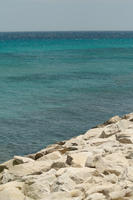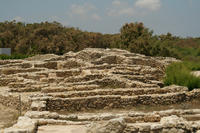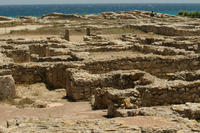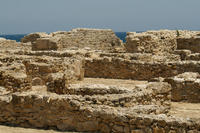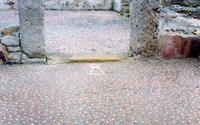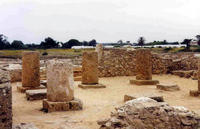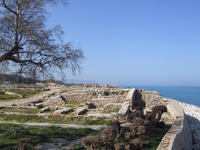You are in: Africa -> Tunisia -> Punic Town of Kerkua... , and traditional search or Image Gallery will yield results of this site only
Punic Town of Kerkuane and its Necropolis
| Site number: | 332 |
|
| Type of site: | Cultural | |
| Date: | c. 250 B.C. | |
| Date of Inscription: | 1985, 1986 | |
| Location: | Africa, Tunisia, Gouvernorat de Nabeul | |
Up to 75 images are shown here. Click on each for more details or on Image Gallery for more images.
| Description: | This Phoenician city of Kerkuane was most likely deserted in the First Punic War, in 250 B.C., and consequently the Romans did not rebuild it. The vestiges represent the only surviving example of a Phoenicio-Punic city. The houses were built to a standard plan compliant with a refined concept of town planning. --WHMNet paraphrase from the description at WHC Site, where additional information is available. | |
| Kerkouane is a Punic city in northeastern Tunisia, near Cape Bon. This Phoenician city was probably abandoned during the First Punic War (c. 250 B.C.) and as a result was not rebuilt by the Romans. It had existed for almost 400 years. Kerkouane, a bit off the beaten track, has the best ruins after the ancient Carthaginian country, as they were only partly destroyed. Excavations have revealed ruins from the 4th and 3rd centuries BC. Around the site where the layout is clearly visible, many houses still show their walls, and the coloured clay on the facades is often still visible. The houses were built to a standard plan in accordance with a sophisticated notion of town planning. A sanctuary has some columns preserved, and in a small atrium parts of mosaics are found. Curbstones, doorsteps, thresholds, and floors of simple mosaic layers are found all over. Still archaeologists work on the Kerkouane site, but the best parts should be discovered by now. Kerkouane was one of the most important punic cities, with Carthage, Hadrumetum (modern Sousse) and Utica. --Wikipedia. Text is available under the Creative Commons Attribution-ShareAlike License. | ||
| Source: | http://whc.unesco.org/en/list/332 | |
| Reference: | 1. UNESCO World Heritage Center, Site Page. | |



